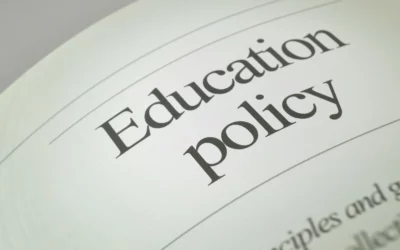
Written by Christine Cooke Fairbanks
May 9, 2024

Is there a relationship between student spending and school outcomes? It is a repeated question – especially in Utah, which has notably low per-pupil spending.
Each year, U.S. News and World Report publishes rankings of the top high schools, and the top ten Utah high schools were recently named.
In examining why these schools rank so well according to an outside institution, we decided to dive into some state-specific metrics, like per-pupil spending and Utah’s own performance indicators.
Using transparency tools like the interactive dashboards created by the Utah Office of the State Auditor and the state’s annual “School Report Cards,” we compiled how much each of the top ten high schools in this ranking spends per student and how they fare on report-card performance metrics, using its designations (from highest to lowest) like exemplary, commendable, typical, developing and critical needs. (ND where there is no score.)
With the U.S. News and World Report top-ten ranking as a launching point, we have analyzed the relationship between spending and performance for these top schools.
The U.S. News and World Report top ten through the lens of Utah data

Interesting takeaways
According to the Utah State Auditor’s Office, the average school per-pupil spending in 2023 was $11,500. It’s worth noting that four schools in the U.S. News and World Report top ten spent less than the state average per pupil. Those are Beehive Science & Technology Academy, Karl G. Maeser Preparatory Academy, The Academy for Math Engineering and Science, and Farmington High School, three of which are charter schools. Overall, exactly half in the top ten were charter schools. Granite School District notably has two schools that made it into the top-ranking schools list.
For some perspective on per-pupil spending and outcomes, compare the data for these top ten schools to Rich High School, which landed at 109th in the Utah ranking by U.S. News and World Report. It spends $28,515 per pupil (several thousand more than Park City High School). Its school report card shows that it earned “typical” on achievement, “exemplary” on growth, “commendable” on postsecondary readiness, ND on English Learner Progress.
Looking at the City Academy charter school, it was ranked number “126-163” in Utah, so basically in the lower rung for those that were actually able to be ranked. The school spends $23,499. Its report card shows that achievement is “typical,” growth is “exemplary,” English Learner Progress is labeled as “critical needs” and Postsecondary Readiness is designated as “developing.”
It might be interesting to know that some schools have very high per-pupil spending, over $60,000 per student like West Desert High School, but without any data on the school report card and unranked.
Showing a few examples of the mismatch between high spending and low outcomes is not something altogether new. And it is not an exercise intended to say schools need a budget cut. In fact, research suggests that the issue of money and outcomes is complicated, that money does matter, and how it’s spent matters a great deal. But this is to say, a few examples might highlight that variables aside from money have important impacts on performance.
Conclusion
With all the data available at the state level, more analysis should be done to assess the relationship between funding and outcomes at all LEAs and schools. A quick look at the top-ranked schools (and some of the lowest) at least tells us that spending is far from the full picture on whether a school performs well.

Insights: analysis, research, and informed commentary from Sutherland experts. For elected officials and public policy professionals.

- Four schools ranked in the U.S. News and World Report top ten spent less than the state per-pupil average.
- Research suggests that the issue is complicated, that money does matter for school performance, and how it’s spent matters a great deal.
Read More
What’s happening with education choice policy?
There’s movement on a federal scholarship tax credit while more states adopt private school choice policies.
Trump’s tariffs: path to working-class prosperity, or protectionist misstep?
Defenders argue tariffs will restore manufacturing jobs, while critics say they amount to a tax on Americans with little real benefit. Experts from both sides weigh in.
Congress should follow Utah’s lead on protecting kids online with app store law
A new bill to regulate app stores has been introduced in Congress.


